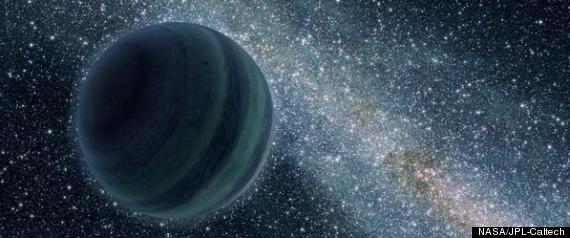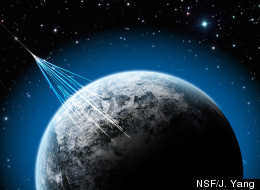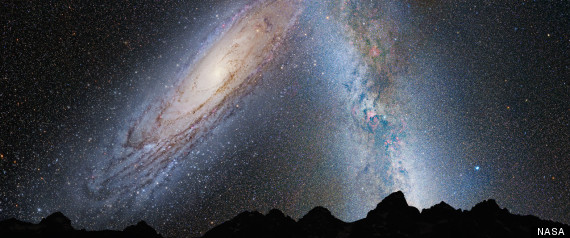Sun
10
Jun
2012
'Planet X?' Odd Orbits In Solar System May Mean Unseen Object, Astronomer Conjectures
From The Huffington Post
Posted: 05/22/2012 5:44 pm Updated: 05/25/2012 4:14 pm
By: Natalie Wolchover
Published: 05/22/2012 12:54 PM EDT on Lifes Little Mysteries

A planet four times the size of Earth may be skirting the edges of the solar system beyond Pluto, according to new research. Too distant
to be easily spotted by Earth-based telescopes, the unseen planet could be gravitationally tugging on small icy objects past Neptune, helping explain the mystery of those objects' peculiar
orbits.
Sun
03
Jun
2012
Astronomy Mysteries: 8 Space Science Questions Scientists Still Can't Explain

From Huffington Post
Posted: 06/01/2012 12:09 pm;
Updated: 06/01/2012 12:09 pm
By: SPACE.com Staff
Published: 05/31/2012 02:13 PM EDT on SPACE.com
The vastness of space and the puzzling nature of the cosmic objects that occupy it provides no shortage of material for astronomers to ponder.
Sat
02
Jun
2012
Milky Way, Andromeda Galaxy To Collide In 4 Billion Years, NASA Says
From Huffington Post
By SETH BORENSTEIN;
05/31/12 05:06 PM ET

Milky Way, Andromeda Galaxy will eventually collide, NASA says.
WASHINGTON -- Don't worry about when the world as we know it might end. NASA has calculated that our entire Milky Way galaxy will crash into a neighboring galaxy with a direct head-on hit – in 4 billion years.
Wed
22
Feb
2012
Scientists find an alien world 'like no planet we know of'

GJ1214b, shown in this artist’s view, is a super-Earth orbiting a red dwarf star 40 light-years from Earth. New observations from the Hubble Space Telescope show that it is a waterworld enshrouded by a thick, steamy atmosphere. GJ 1214b represents a new type of planet, like nothing seen in the solar system or any other planetary system currently known.
Sat
26
Mar
2011
Supermoon Pictures

Photograph by Emanuel Lopes, My Shot
On Saturday the moon (pictured over Lisbon, Portugal's Tagus River) made its closest approach to Earth in 18 years—making the so-called supermoon the biggest full moon in years. (Get the full story of the supermoon.)
The monthly full moon always looks like a big disk, but because its orbit is egg-shaped, there are times when the moon is at perigee—its shortest distance from Earth in the roughly monthlong lunar cycle—or at apogee, its farthest distance from Earth.
Likewise, because the size of the moon's orbit varies slightly, each perigee is not always the same distance away from Earth.
Saturday's supermoon was just 221,566 miles (356,577 kilometers) away from Earth—making the supermoon about 20 percent brighter and 15 percent bigger than a regular full moon, said Anthony Cook, astronomical observer for theGriffith Observatory in Los Angeles.
Before the supermoon, astronomer Geza Gyuk said, "Look for the full moon as it rises above the eastern horizon as the sun sets below the western horizon—it will be a beautiful and inspiring sight."
That's advice a lot of photographers, including National Geographic fans, one of whom contributed this picture, apparently took to heart.
 DISCUSSION
GROUP
DISCUSSION
GROUP


